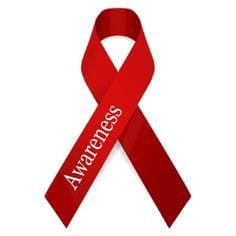Disclosure :: this post is sponsored by Crescent City Physicians, Inc.
Women and Heart Disease: Symptoms You Should Not Ignore
Many women visit their gynecologist every year to follow recommendations for Pap smear and Mammogram, and for most of them we are the only physician they will see. It is important that during that visit we provide all information pertinent to their overall health. Your gynecologist cannot only provide primary care, they can also help guide and refer patients to specialist and or Internal Medicine physicians who can help us manage women’s overall health.
 Cardiovascular disease is the leading cause of death in females in the United States, 1 in 4 women die from heart disease. The majority of women between the ages of 40 and 60 have at least one risk factor for the disease. But many do not realize it. The risk increases as we age, especially after menopause. The groundwork for heart disease can start in your 20s.
Cardiovascular disease is the leading cause of death in females in the United States, 1 in 4 women die from heart disease. The majority of women between the ages of 40 and 60 have at least one risk factor for the disease. But many do not realize it. The risk increases as we age, especially after menopause. The groundwork for heart disease can start in your 20s.
A common form of heart disease is Coronary Artery Disease, which affects the blood vessels and arteries that supply the heart and can lead to a heart attack. Even though chest pain is the most commonly reported symptom for heart disease in women, symptoms may not always be severe for them to seek help. In some women other symptoms of heart disease may be present which may include:
- Neck pain
- Right arm or shoulder pain
- Abdominal discomfort sometimes described as heartburn
- Shortness of breath with activity
- Fatigue
Risk factors for heart disease can be divided into those that suggest a major risk and those that lead to an increased risk.
Major risk factors are:
- Smoking
- Elevated blood pressure
- Elevated cholesterol and triglycerides
- Diabetes
- Obesity or being overweight
- Sedentary lifestyle
- Heredity
- Age
Factors that could lead to an increased risk include stress and excessive alcohol consumption. For women, that means more than 1 drink a day.
Knowing your risk factors is vital. The more risk factors you have and the worse they are the greater your risk for heart disease. Once you know your risk factors, you can learn whether you’re at high, intermediate, or low risk for heart disease.
During your yearly visit these symptoms should not be ignored and should be reported to your physician, who can start your workup not only by ordering test but can also provide information about cardiovascular specialists. This can be the first step you take to reduce your risk of heart disease. Other steps to reduce the risk of heart disease include the below lifestyle changes:
- Reach and keep a healthy weight – you will reduce your blood pressure, cholesterol, and diabetes risk
- Trim saturated fat and salt from your diet
- Exercise – exercising at a moderate to high intensity for at least 30 minutes, 5 days a week, can lower your blood pressure.
- Limit alcohol intake
- Quit smoking – smoking is the most common risk factor for women. It triples your heart attack risk.
- De-stress daily
Next time you visit your gynecologist, remember we are here as part of a team of physicians dedicated to help you reach your health goals.
About Arelis Figueroa, MD
 Arelis Figueroa, MD started practicing obstetrics and gynecology with Crescent City Physicians in 2014. She was born and raised in Puerto Rico where she earned her Medical degree in 2008. She completed her Obstetrics and Gynecology training at LSU New Orleans in 2012. Dr. Figueroa is fluent in both Spanish and English.
Arelis Figueroa, MD started practicing obstetrics and gynecology with Crescent City Physicians in 2014. She was born and raised in Puerto Rico where she earned her Medical degree in 2008. She completed her Obstetrics and Gynecology training at LSU New Orleans in 2012. Dr. Figueroa is fluent in both Spanish and English.
Office locations:
4740 South I-10 Service Road West, Suite 340,
Metairie, LA 70001
504.455.0004
3434 Prytania Street, Suite 130
New Orleans LA, 70115
504.897.7580
*Friday Only

















There is a common misconception that only men are susceptible to the risk of heart disease, but they are all sadly mistaken.
Cardiovascular disease, which includes heart disease and stroke, is the biggest killer of women worldwide. Heart disease and stroke kills 8.6 million women each year, which is 1/3 of all deaths worldwide.
One of the contributing factors in the number of deaths is that the symptoms of heart disease can be different in women and men, and are often misunderstood.
While there are some women who do not display any symptoms whatsoever, there are others who experience angina, which is a dull chest pain and/or discomfort that can be heavy to sharp in nature, pain in their upper back or abdomen or pain in their neck/throat/jaw. These pains can occur while you are resting, when you begin any physical activity or they can also be triggered due to mental stress.
Women in general are more likely to describe their chest pain as sharp and burning, and they are more frequently prone to pain in their jaw, neck, throat, back, or abdomen.
I would certainly share this post further so that people get more aware of health an issue and do not take their cardiac problems for granted, especially females.